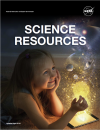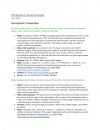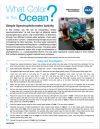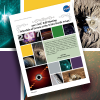You are here
Science Communication Material
NASA's Earth Observing System provides a variety of materials available for download. Feel free to choose a category below:
- Brochures
- Postcards
- Posters
- Science Writers’ Guide
- Mission Brochures
- Fact Sheets
- Calendars
- Booklets
- Lithographs
- Reference and Data Products Handbooks
- iBooks
- Activities
 |
Science Resources (April 2018) This booklet contains weblinks to NASA science resources. This publication appears in: |
 |
Seadler 6.7.18 - ABoVE Infographic - FINAL Infographic 1 of 7 in a series for Jack Kaye and Bruce Tagg that show the value of airborne science to Earth science research. Each infographic covers a different airborne campaign and provides a few things we wouldn't have known without its aircraft data. This publication appears in: |
 |
Seadler 6.7.18 - SEAC4RS Infographic - FINAL Infographic 2 of 7 in a series for Jack Kaye and Bruce Tagg that show the value of airborne science to Earth science research. Each infographic covers a different airborne campaign and provides a few things we wouldn't have known without its aircraft data. This publication appears in: |
 |
Seadler 7.11.18 - JUNE Research Results Roundup - FINAL The first version of the Earth Science Research Results Roundup, a compilation of Earth science research results sent to Abby each month from Ames, Goddard, JPL, Langley, and Marshall. These do not include every result sent to Abby, but those she thinks are interesting or different or would interest a wider audience. The language is her quick take on the result based on the original text from the centers, the published paper, and her understanding of the science. She will send these out monthly as a way to get what information about what we're learning to Program Managers, Earth science communicators, and our third-party stakeholder community. This publication appears in: |
 |
What Color is the Ocean? Activity Flyer |
|
|
What's Binary Code? To process and store data, computers use a simple coding system, called binary code (“bi” means two). Like a simple light switch which has only two positions—ON and OFF—computers encode data using only two binary digits—0 and 1, called bits. All letters (see back), digits, and special characters have been encoded with defined sequences of bits. Most modern character-encoding schemes use a binary string of eight bits. This publication appears in: |
 |
NASA's Science Communication Support Office Annual Report 2017 The Science Communications Support Office (SCSO) supported 18 domestic and international science conferences and 6 public events in 2017. The SCSO continues to provide an inspiring and interactive venue for every event during the year, using a unique storytelling approach that allows a variety of audiences worldwide to connect with NASA Science. The 2017 Annual Report provides an overview of these activities with details about new Hyperwall stories, publications, social media, key partnerships, and more! This publication appears in: |
 |
2017 AGU Schedule of Events at the NASA Booth During the 2017 AGU Fall Meeting, held December 11-15, 2017, navigate the streets (or rues) of the NASA Booth (#1645) and immerse yourself in science. Join us at the Inspiration Theatre for science stories, share a piece of your personal history involving NASA at NASA’s Living Timeline exhibit, and make new science connections while strolling down Avenues Interconnected, Impact, Innovation, and Inspiration. Learn something new, have fun, and discover together! This publication appears in: |
 |
2017 NASA Science Mission Directorate Calendar |
 |
A Changing Earth at Night The map on the front of this poster shows the change in lighting intensity from 2012 to 2016. The map was created using two separate night lights datasets (from 2012 and 2016) derived using data from the Visible Infrared Imaging Radiometer Suite (VIIRS) on the National Oceanic and Atmospheric Administration (NOAA)-NASA Suomi National Polar-orbiting Partnership (NPP) satellite. The back of the poster explains how scientists use night lights data from VIIRS to study our planet at night. This is related to the following mission(s): This publication appears in: |
